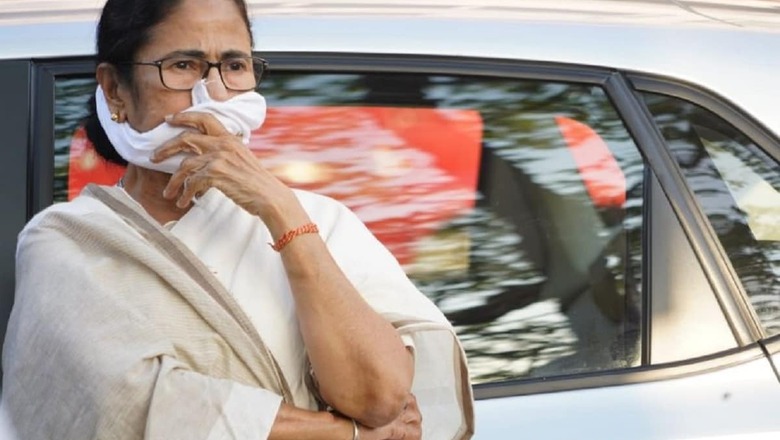
views
A culture of political vendetta is blooming in West Bengal as the politically significant and tumultuous 2021 assembly election approaches. The recent attack on the convoy of BJP president JP Nadda, which sparked heated debate, is a case in point. Chief minister Mamata Banerjee immediately blamed the BJP for the attack on its own convoy, leading some to conclude that she alone has the rhetorical capacity to challenge the saffron party.
Yet, if the original idea of “Shonar Bangla”—the rich culture of West Bengal—is illuminated by figures such as Rabindranath Tagore, Ishwar Chandra Vidyasagar, Ram Mohan Roy and Satyajit Ray, then the BJP chief and the party’s national general secretary, Kailash Vijayvargiya, are actively trying to replace this heritage with something quite different.
In recent years, RSS-affiliated Vidya Bharti and Sarada Vidya Mandir schools have expanded in the state and incremental reports point to new Sangh shakhas extending to almost every block. New shakhas have recently started in various blocks in Uttar Dinajpur such as in Karandighi, Hemtabad and Raiganj.
The other strategy deployed by the BJP is to tap into segments that are unhappy with the TMC rule. Union home minister Amit Shah has promised voters jobs by restarting appointments under the West Bengal School Service Commission (SSC). In reaction, the state government notified the recruitment of about 3 lakh candidates under the commission by January 2021, a process that had been stalled for over three years.
A separate notification for Santhali-medium government-aided/sponsored schools was also issued. This may help it retain a substantial support base among the Scheduled Tribes, whose votes the BJP is vying for as well. Stalled SSC recruitments have generated tremendous angst among the educated unemployed youth in the state. The BJP has seized in this angst an opportunity to spin a narrative that its support in West Bengal is not growing due to money or muscle power, but because of underdevelopment. This sentiment defined Shah’s recent speech in the state.
Now the question people are asking is can a man who is non-Bengali change the politics and culture of Bengal. It is also whether the TMC can effectively counter the charging BJP brigades.
Since 2011, there has been a clear waning of political ideology, as it was understood in West Bengal politics. Ever since the CPI(M) lost power in the state, there is little incentive—moral, political or financial—for voters to remain tethered to one political party. The general lack of resources in West Bengal, the BJP’s capacity to dole out monetary benefits, and its reputation as the wealthiest political party, makes the possibility of a fresh round of conversion to the BJP fold concrete, as happened after the TMC won the 2011 election.
A senior politician from North Dinajpur said, “Jotoi BJP rajneeti koruk, jeetbe Didi ei (no matter what political tactics the BJP attempts, in Bengal it is Mamata Banerjee who will win).” He says Mamata did not become a leader overnight but spent years struggling, which will make all the difference to the electoral outcome.
In 2011, the AITC-Congress coalition won 227 of the 294 seats in the Assembly on the plank of poriborton—change. Now, the poriborton narrative is regaining momentum. Shubham Shil, a young man from Balurghat (a region with strong BJP presence and whose Member of Parliament belongs to the saffron party) says his family lost their tractor-parts store due to the Covid-19 lockdown. He is banking on “badlav”, or change, and believes the Modi regime at the Centre will help steer it in the state. The popular understanding in this region is that the TMC largely gives space to the rich or well-established old political affiliates. Conversely, another young man, Shubham Ghosh, from a well-off family and whose uncle is connected with the TMC, says, “Mamata may be a woman, but she can be a better PM than Modi.”
The current socio-political scenario in the state is indicative of a deep and growing divide between the privileged and underprivileged. Seeing the BJP’s political influence grow is pushing the latter to consider voting for it in the coming polls. The BJP’s victory in the Bihar assembly election is emerging as another factor. Tarkishore Prasad, the MLA from Katihar who has won the seat four times, has been made deputy chief minister of Bihar. Katihar shares a border with West Bengal and so his elevation is being seen primarily as an attempt to woo the Bihari Bengalis, mostly living in Kolkata, Hooghly, Howrah and Asansol districts.
Vivash Kumar Das, a graduate from Madhupur (also known as Baroduary) in Raiganj, wants his next vote to go to the BJP despite his father’s association with the Left. Vivash has been trying to get a government job, but in vain, which is the reason for his grouse against the TMC. The BJP’s recent win in Bihar has also influenced him. Raiganj town in Uttar Dinajpur was once a Congress bastion, from where Priya Ranjan Dasmunsi was Member of Parliament. In the 2014 Lok Sabha election, Mohd Salim of the CPI(M) defeated the rival Congress and BJP candidates on the seat. He lost the seat in the 2019 Lok Sabha election to Debasree Chaudhuri of the BJP, and since then the BJP has risen against the backdrop of Hindutva politics.
Another arena the BJP is trying to dig into is the unrest among tea plantation workers in North Bengal, who have raised demands which remain unfulfilled by the state government. Local BJP leaders are also propagating in areas where members of Scheduled Tribes and Scheduled Caste live, that the NRC will be implemented in the state if their party comes to power. Land owned by Muslims, it is being subtly communicated, may then fall into their hands.
At the same time, the Congress party’s position has been declining continuously with the rise of the TMC and the BJP. North Dinajpur, Murshidabad and Malda were once considered Congress bastions because it could boast of veteran leaders such as Dasmunsi, Ghani Khan Choudhury and Adhir Ranjan Chowdhury. The Congress was shaken to its roots by the death of Khan and Dasmunsi. In the 2014 Lok Sabha election it could retain only four seats in the state. Now, in North and South Dinajpur, and other parts of central and North Bengal such as Malda North, Jalpaiguri, Darjeeling, Cooch Behar, Balurghat, Alipurduar and East Bardhaman, the BJP has been winning seats where Dalit and tribal voters have a significant presence.
Says Bhim Hembram, a voter from North Dinajpur who belongs to a Scheduled Tribe, “Money-for-jobs [scams] are rampant in the region, which is holding back members of Scheduled Castes and Scheduled Tribes. They are unable to secure jobs as they find it difficult to arrange money.” Kamal Sarkar, a resident of Uttar Dinajpur, shares a similar experience. He was asked to pay cash up front to secure a job at a well-known university, but he did not eventually get the job. A faculty member of a prominent college affiliated to the University of Calcutta also said that seats are being offered to students for money. This could prove to be Mamata government’s Achilles’ heel. Rajen Hembram, a member of a Scheduled Tribe from Raiganj, on the other hand, said the BJP is in a position to provide them more benefits, by virtue of being in power at the Centre and cash-rich. Rajen used to vote for the CPI(M) but now he thinks the BJP would be a better choice. There is also belief among supporters of the Left parties that the BJP would arrest the TMC’s unrestrained, and at times unruly, approach to politics and governance.
In the panchayat elections held in 2018, booth-capturing by TMC workers was reported in many polling stations and there were reports of threats to senior CPI(M) and Congress leaders. On many seats, supporters of the Left Front were not allowed to cast their vote. In sheer frustration, they voted for the BJP to counter the aggressive politics of the TMC. Nevertheless, the Mamata government has a strong hold over panchayat seats after the TMC bagged 18,652 gram panchayats, 1,570 panchayat samiti and 19 zila parishad seats in 2018. This has prompted those who did not get space in the Congress or Left parties to support the BJP, hoping to counter the TMC and because the BJP has a national presence. The rise of Hindutva has also helped the BJP secure more seats, as it has projected the TMC as a “party of Muslims”.
Another reason for BJP’s growth is the TMC’s choice of candidates. While the Congress and Left parties value senior and experienced people more, the TMC gives more space to inexperienced leaders, including the notorious among them. This has hurt senior politicians, including some who have a hold over particular constituencies. These are the leaders that have been migrating to the BJP in very recent years. The result was that in the Lok Sabha election in 2019, the TMC bagged only 22 seats while the BJP grew rapidly to 18 seats. This is also why the presumption in the state is that if the Congress and Left do well in the upcoming election—retain their voters and gain some new supporters—they may hold back the BJP.
Mamata’s nephew Abhishek Banerjee has emerged as a factor too. He has a deep hold over the party, but this is creating unease among veteran TMC leaders who earlier saw themselves as close to the chief minister. Recently, Sunil Kumar Mandal said that poll strategist Prashant Kishor’s Indian Political Action Committee (IPAC) is pressurising senior leaders and “teaching them politics”. To be fair, the perception is that those who are leaving the TMC for the BJP are allegedly involved in the chit fund scam, as seen with Suvendu Adhikari and Mukul Roy.
It is believed that if the TMC had given more space to the Left as the political opposition, then the situation would have been quite different. Left supporters, including among Scheduled Tribes such as Santhal, Munda and Oraon have instead been finding space in the BJP, as have Scheduled Caste groups, who seem to have started following the BJP due to their Hinduisation, coupled with their disenchantment with other parties. The rise of the BJP has mostly been in North Bengal. Coincidentally, the Muslim population is concentrated in the northern regions, which puts the BJP at an advantage to stoke a communal politics of divide and rule.
Read all the Latest News, Breaking News and Coronavirus News here




















Comments
0 comment